IIT Bhubaneswar CS4L006 Assignment: Applied Graph Theory Connectivity
VerifiedAdded on 2021/09/28
|39
|4013
|163
Homework Assignment
AI Summary
This assignment solution for CS4L006 Applied Graph Theory at IIT Bhubaneswar delves into the concept of connectivity in graphs. It begins with basic definitions of vertex cuts, connectivity (κ(G)), and k-connected graphs, followed by an exploration of edge cuts, edge-connectivity (κ0(G)), and k-edge-connected graphs. The solution includes key theorems such as κ0(G ) ≤ δ(G ) and κ(G ) ≤ κ0(G ), along with a detailed proof for the connectivity of a hypercube (κ(Qk ) = k). Furthermore, it discusses 2-connected graphs, Whitney's theorem, the expansion lemma, and characterizations of 2-connected graphs, providing a comprehensive overview of graph connectivity. Desklib offers this and other solved assignments to aid students in their studies.
1 out of 39




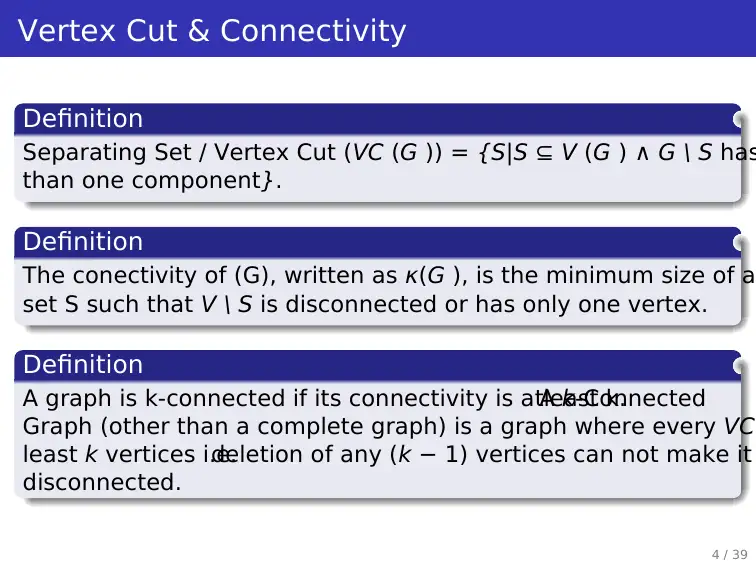
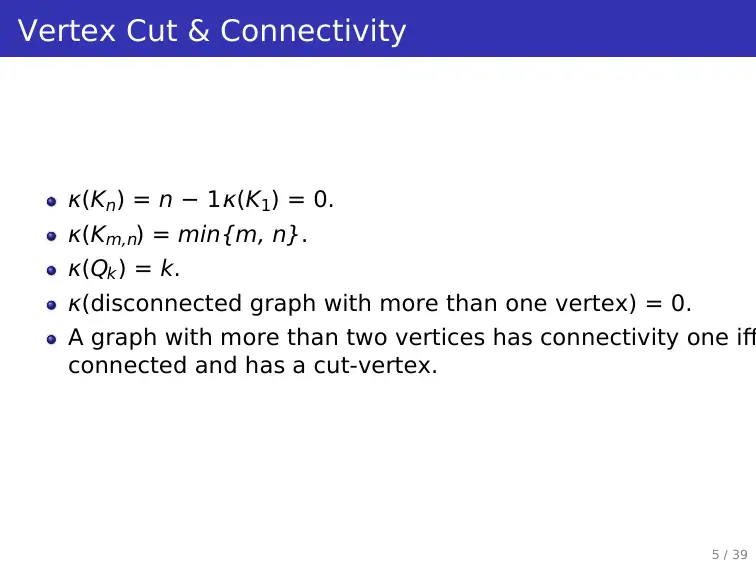
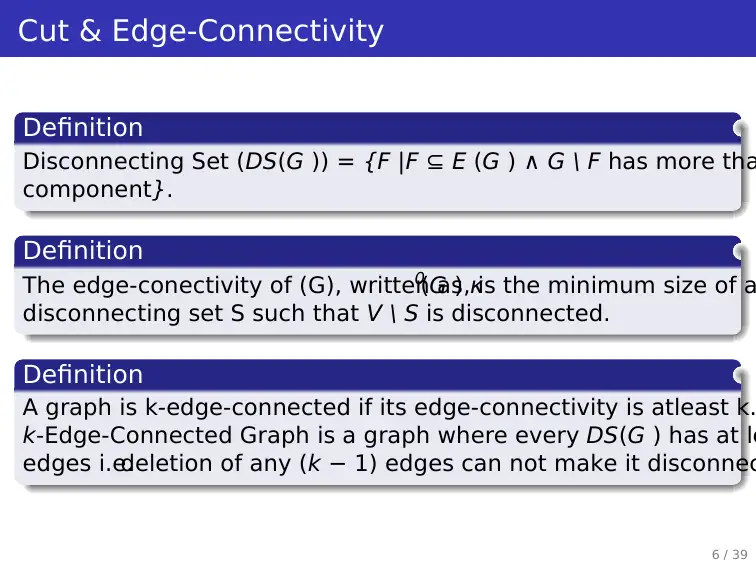
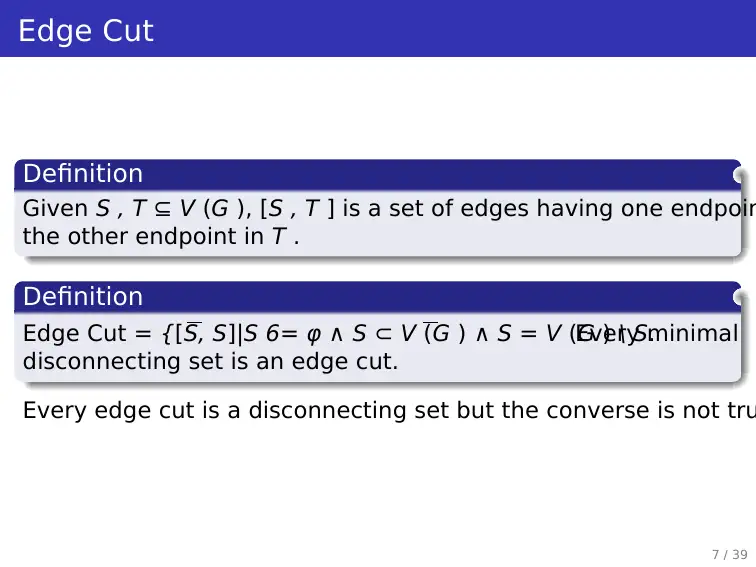

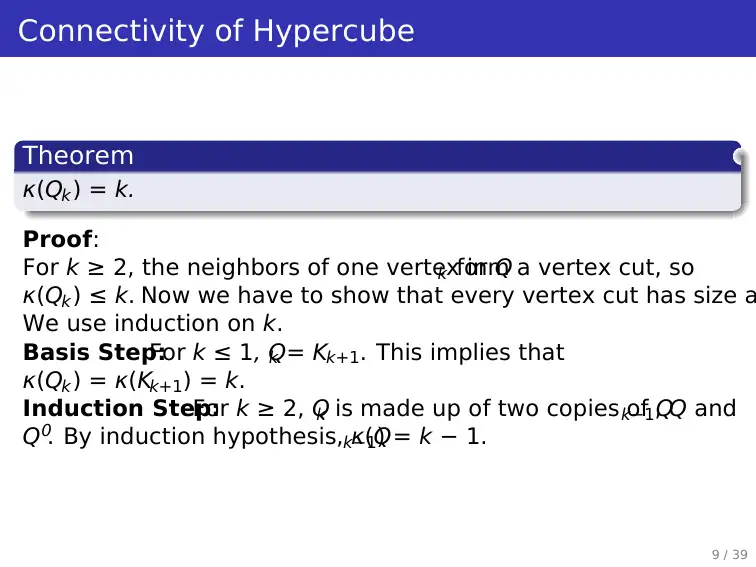
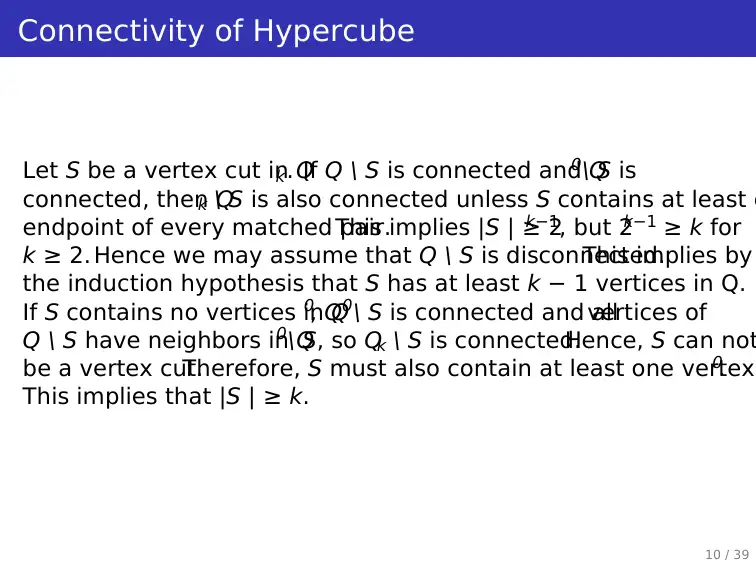

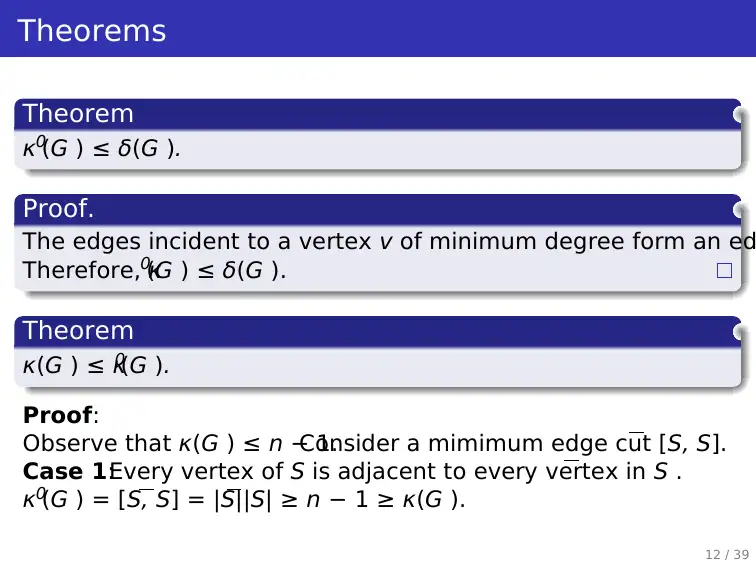






![[object Object]](/_next/static/media/star-bottom.7253800d.svg)